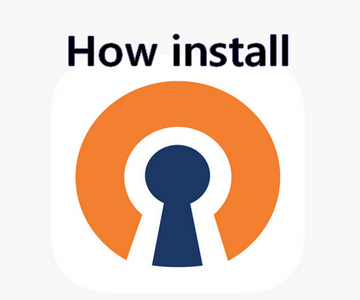Virtual Private Networks or VPNs allow you to securely surf the internet, bypass geographical restrictions, and keep your online activities private. OpenVPN is an open-source VPN protocol that offers strong encryption, privacy, and performance. Although setting up OpenVPN on various devices might seem daunting, it is a straightforward process, and this guide will walk you through the installation process step-by-step.
In this article, you’ll learn how to install OpenVPN on Windows, Mac, Linux, Android, and iPhone. Follow the instructions carefully and have your OpenVPN up and running on any device in no time.
- How to Install OpenVPN on Windows?
- How to Install OpenVPN on Mac?
- How to Install OpenVPN on Linux?
- How to Install OpenVPN on Android?
- How to Install OpenVPN on Iphone?
What is OpenVPN?
OpenVPN is a protocol that creates a secure and encrypted connection between two or more devices on the internet. It is a popular choice for VPN connections due to its high level of security, reliability, and flexibility. Unlike other VPN protocols, such as PPTP and L2TP/IPsec, OpenVPN is open source, which means that anyone can inspect its code for vulnerabilities. This creates trust and confidence in the integrity of the protocol.
OpenVPN works by creating a point-to-point connection between two devices, such as a computer and a server, through a virtual tunnel. This tunnel encrypts all data that passes between the devices, making it impossible for anyone to intercept or tamper with the data. Furthermore, OpenVPN uses digital certificates for authentication, ensuring that only authorized devices can access the network.
Now that you understand what OpenVPN is, let’s move on to the installation process.
How to Install OpenVPN on Windows?
Step 1: Download and Install OpenVPN
The first step in installing OpenVPN on Windows is to download the software from the official OpenVPN website. Simply navigate to the downloads section of the site, select the appropriate version of OpenVPN for your operating system, and then follow the on-screen instructions to download the installer.
Once you have downloaded the installer, simply double-click on the file to begin the installation process. Follow the prompts to select your installation options, and then click the button to install the software on your computer. It is important to note that during the installation process, you may be asked to install additional components or drivers, which are necessary for the proper operation of the software.
Step 2: Configure OpenVPN
After installing OpenVPN, the next step is to configure the software to work with your specific network or VPN provider. In order to do this, you will need to gather the appropriate configuration files, which are typically provided by your VPN provider or network administrator.
Once you have obtained these files, create a new folder on your computer to store the configuration files, and then copy them into this folder. Next, open the OpenVPN software and select the option to import a new connection. Select the appropriate configuration file from your folder, and then follow the prompts to complete the setup process.
Step 3: Connect to your VPN
Once you have configured OpenVPN, you can use the software to connect to your VPN or remote network. Simply launch the OpenVPN software and select the connection you wish to use, and then click the “Connect” button to establish a connection.
When you are connected to your VPN, the OpenVPN software will display a notification in the system tray, indicating that you are now securely connected to your network. You can then use your computer as you normally would, with the added benefit of being protected by a secure and encrypted connection.
How to Install OpenVPN on Mac?
Step 1: Download and Install Tunnelblick
Tunnelblick is an easy-to-use OpenVPN client for Mac. It simplifies the process of configuring and using OpenVPN on your computer. To download Tunnelblick, visit the official website at https://tunnelblick.net/downloads.html. Once you’ve downloaded the DMG file, double-click it to open it. Then, drag and drop the Tunnelblick icon into the Applications folder.
Step 2: Download OpenVPN Config Files
To set up OpenVPN, you need to download the configuration files for the VPN you want to use. These files are typically provided by the VPN service provider. Once you have the files, save them to a location where they can be easily accessed.
Step 3: Install OpenVPN Config Files
To install the OpenVPN config files, follow these steps:
- Launch Tunnelblick.
- Click on the Tunnelblick icon in the menu bar and select “VPN Details.”
- Click on the “+” button to add a new VPN configuration.
- Select “OpenVPN Configuration(s)…”
- Browse to the location where you saved the OpenVPN config files and select the one you want to use.
- Click “Open” to add the VPN configuration to Tunnelblick.
- Repeat steps 3-6 for any additional VPNs you want to use.
Step 4: Connect to OpenVPN
To connect to an OpenVPN server, follow these steps:
- Click on the Tunnelblick icon in the menu bar.
- Select the VPN configuration you want to use.
- Click “Connect.”
Tunnelblick will establish a connection to the selected VPN server and display a message confirming that you’re connected.
Step 5: Verify your Connection
To verify that your connection is secure and that your traffic is being routed through the VPN server, visit https://ipleak.net/ in your browser. This website should display the IP address associated with the VPN server you’re connected to.
How to Install OpenVPN on Linux?
Step 1: Check if OpenVPN is already installed
Before installing OpenVPN, it is important to check whether it is already installed on your Linux system. To do this, open the terminal and type the following command:
$ openvpn –version
If it shows the version number, it means OpenVPN is already installed. Otherwise, you can proceed with the installation.
Step 2: Update the system
Before installing OpenVPN, it is recommended to update your Linux system to the latest packages. This ensures that any potential security issues with outdated packages have been addressed. To do this, use the following command:
$ sudo apt-get update && sudo apt-get upgrade
Step 3: Install OpenVPN
Now, it’s time to install OpenVPN. You can install OpenVPN using the package manager of your Linux distribution. For example, in Ubuntu, you can install OpenVPN using the following command:
$ sudo apt-get install openvpn
For other distributions, you may need to use a different package manager. If you’re not sure which one to use, consult the documentation for your Linux distribution.
Step 4: Configure OpenVPN
Once OpenVPN has been installed, you will need to configure it for your specific use case. To do this, you will need to create a configuration file. The configuration file tells OpenVPN how to connect to a specific VPN server and how to handle encryption and authentication.
There are many different configuration options available with OpenVPN. The basic format of a configuration file consists of a series of directives, each specifying some aspect of the connection. You can find many sample configuration files on the OpenVPN website or through a Google search.
Step 5: Start the OpenVPN service
After you have created and saved your configuration file, you need to start the OpenVPN service to establish a connection. Use the following command to start OpenVPN:
$ sudo openvpn
For example, if your configuration file is named “client.ovpn”, you would use the following command:
$ sudo openvpn client.ovpn
Once you have started the OpenVPN service, you should see messages in your terminal indicating that the connection has been established.
How to Install OpenVPN on Android?
Step 1: Download the OpenVPN App
The first step to install OpenVPN on Android is to download and install the OpenVPN app from the Google Play Store. Simply go to the Google Play Store in your Android device, search for “OpenVPN” and click on the “Install” button. Once the installation process is complete, click on the “Open” button to launch the OpenVPN app.
Step 2: Download Configuration Files
After you have installed the OpenVPN app on your Android device, the next step is to download the configuration files for the VPN service you want to use. Most VPN providers offer configuration files for their users to download, and these files can typically be found on the provider’s website. You can also contact the provider’s customer support team for more information on how to download their configuration files.
Step 3: Import Configuration Files
Once you have downloaded the configuration files, you can start importing them into the OpenVPN app. To import the files, simply open the OpenVPN app and tap on the “Import” button. Navigate to the location where you have saved the configuration files and select the file(s) you want to import. You will then be prompted to enter your VPN service username and password.
Step 4: Connect to Your VPN
After you have imported your configuration files, you can now connect to your VPN service. To do this, simply tap on the configuration file you want to use and click on the “Connect” button. The OpenVPN app will then establish a connection with your VPN provider and you will be able to browse the internet securely and anonymously.
In conclusion, installing OpenVPN on Android is a simple process that can be done in a few easy steps. By using the steps outlined in this article, Android users can install the OpenVPN app on their device, download and import configuration files, and connect to a VPN service to protect their online privacy. With OpenVPN, you can enjoy a secure and private browsing experience on your Android device anywhere in the world.
How to Install OpenVPN on Iphone?
Step 1: Download OpenVPN Connect from the App Store
Firstly, you need to download the official OpenVPN Connect app from the App Store on your iPhone to set up a secure connection. Open the App Store on your iPhone and search for ‘OpenVPN Connect.’
Step 2: Install OpenVPN Connect
Once you have located OpenVPN Connect, tap on ‘Get’ to start the installation process. The app will begin to download, and once done, tap on ‘Install’ to finish the process. After the installation is complete, the app will appear on your iPhone’s home screen.
Step 3: Download VPN configuration files
Before you can start using OpenVPN Connect, you will require VPN configuration files provided by a VPN service or organization. You can download the configuration files according to your VPN provider’s instructions or from an open-source directory. You have to save these files on your iPhone to import them into OpenVPN Connect.
Step 4: Import VPN configuration files to OpenVPN Connect
After downloading the VPN configuration files, you have to import them to OpenVPN Connect. You can use iTunes to transfer VPN configuration files to your iPhone or send them to your iPhone through email. Once the files are saved on your iPhone, go to OpenVPN Connect and tap on the ‘Settings’ icon.
Next, tap on ‘Import Profile’ to search for the VPN configuration files that you have downloaded. Select the VPN configuration files that you want to use with OpenVPN Connect, and tap ‘Import.’
Step 5: Connect to VPN
After importing VPN configuration files to OpenVPN Connect, you can now connect to a VPN server by tapping on the ‘Green’ connect button, which will connect you to the VPN. You will receive a notification when the connection is established. By tapping the same button, you can also disconnect from the VPN.
In conclusion, installing OpenVPN on your iPhone is a quick and easy process when you follow these simple steps. With OpenVPN, you can enjoy a secure and private internet connection, no matter where you are.







